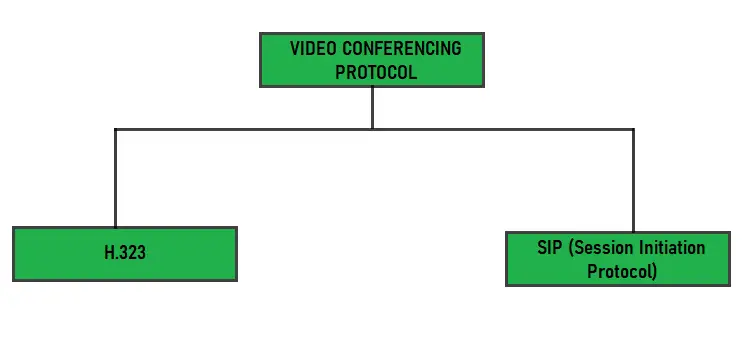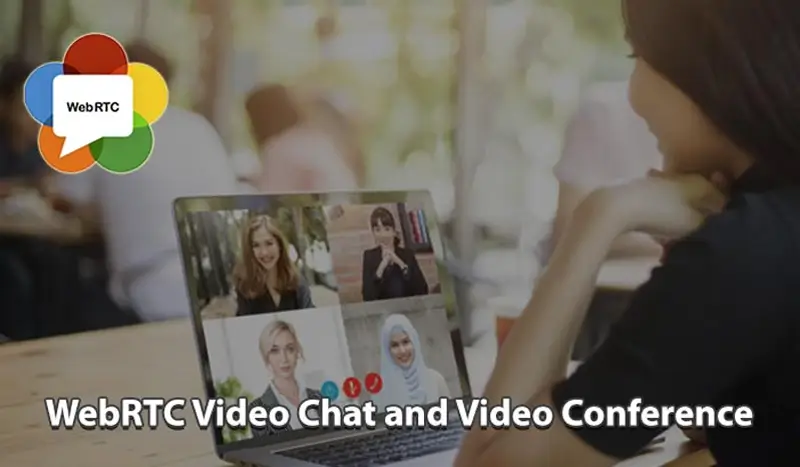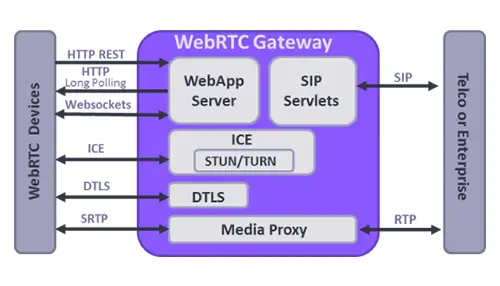WebRTC is a free and open-source project that enables web browsers and mobile devices to provide simple real-time communication. This means the WebRTC video chat application features peer-to-peer video conferencing that can easily be integrated into a web page. A browser-based video chat can be engineered rapidly with HTML and JavaScript, with no back-end code required. WebRTC allows users to stream peer-to-peer audio & video in modern web browsers.
Using WebRTC in the app allows you to enact audio and video communication and data transfer without any additional plugins. A fully-functional WebRTC package might include such features as peering, streaming, and video and audio codecs for communication arrangements between two or more online users. When you are thinking about the security of your video chat app, consider WebRTC. WebRTC video chat app it’s truly a reliable tech option for secured real-time video transferring even for industries like healthcare, real estate, or finance.
Connecting a user’s device through WebRTC is as simple as initializing a new RTCPeerConnection(); object in front-end JavaScript. Nowadays, WebRTC support comes out of the box with web browsers like Chrome, Firefox, Edge, Safari, and Opera on desktop, as well as native iOS and Android web browsers.
There are 4 API Interfaces to use in WebRTC Video Conference and Video Chat:
1. MediaStream: With this interface, a client can chat with someone using either a webcam or a microphone.
2. RTCPeerConnection: With this one, you can activate audio or video data transfer with encryption support and access control.
3. RTCDataChannel: This interface provides users with a P2P communication network for data generalization.
4. OpenTOK: This is a cloud PaaS platform that acts as a wrapper library. You can find it as part of some WebRTC toolkits. It is an open-source library that makes it possible to create cross-platform video chats on a WebRTC API-basis.
Examples of The Video Conferencing Apps:
You are probably somewhat aware of the names and qualities that make for a top video chat conference app. We’ll list a few of them so you can get an idea of which ones are dominating the market at this point. These examples of video conferencing applications are only a few of those that are out there.
a. Facebook Messenger:
This is a video messaging app with over 1 billion downloads on Android smartphones. Besides, the platform is integrated on the social network and records more than 10% of all mobile VOIP calls worldwide.
b. Facetime:
It was developed by Apple Inc. with the initial release in 2010. It is meant to be used on iPhones, iPads, and other Apple devices. However, for the last year, the FaceTime app went down because of a bug with video feed enabled without other users’ acceptance. Though the bug was fixed shortly, it got a huge world announcement, even named “FacePalm” by security experts and mass media.
c. Google Duo:
Duo is a video chat mobile app released in 2016, and shortly by the end of 2018, it has reached over 1billion of downloads except for the number of Android devices where it is pre-installed.
d. WhatsApp:
This freeware, cross-platform messaging service is owned by Facebook. It became popular a couple of years ago and was first used by the younger generations. It was recorded that more than 2 billion minutes of voice and video call users make on WhatsApp daily under the Chet research data.
e. Skype:
Many of the most prominent companies in the world now use Skype, to the point that the term is now a verb, as in “lets Skype after lunch.” It is a useful tool for free face-to-face chatting that has lots of intuitive features. This might be the best teleconference app. Moreover, there were 1.55 billion Skype users by the end of 2019 under Statista.
f. WeChat:
This is an app with over 1 billion active monthly users according to the BusinessOfApp data. The application allows you to group chat, send video and text messages, and more. It is available for many platforms and is making inroads into an already crowded marketplace.
Benefits Of Building a Messaging App:
By building the right product and promoting it for the targeted audience, you can reach the numbers of Skype with its $8.5 billion market estimation. Besides, there are substantial benefits of building a video call app for business own usage instead of paying price for using some existing solution:
a. New Business Opportunity:
For most offline businesses building their video call app means paving ways to reach new audiences and expand their services over other locations. For example, our development team built a video conferencing software for legal agency NuLawyer. The solution allows them to make online meetings with their clients all over the world ensuring that the data is secured.
b. Sales Growth:
When customers use eCommerce websites or provide some services questions can arise. For instance, they might not be able to decide which products or services are better suited for their needs. Web meeting apps allow users to speak with sales managers, they can be assured that they’re making the right choice and that the product is an ideal match for them.
c. Customer Support:
Online support is critical if you are running an eCommerce store or provide some high-level services. Having a well-constructed web-based conferencing app is a vital fallback option for providing customer support.
d. Increase Teamwork Productivity:
In any kind of business, a video chat app for Android or iOS or web can serve as a platform to promote fruitful business collaboration and training. The more experienced employees can use it to teach newcomers how to deal with the various issues that may arise. The video chat app increases the remote team productivity and decision-making process at the company, just look at how often employees use video calls over a day.
Tech Stacks And Steps To Create a Video Chat App:
The benefits of the video app and an approximate number of their users. The next step if you decide to create your solution, there are a few major steps of video app development process that impact on the solution success hugely:
1. UI/UX Design:
Make sure you integrate all UX deliverables and methodologies into your app design process. Keep in mind that the user experience should always be foremost in your mind, which means the interface should be intuitive and visually attractive. The features of video chat apps should never be convoluted or confusing. A novice should be able to understand and use it as easily as someone who is extremely tech-savvy.
2. Back-End Development:
Having the right design wireframes at this juncture ensures that there will be fewer functionality issues later and you can move ahead to choose your solution tech stack option. As you get started, you’ll need to create the server-side framework on which the app will be based. Video conferencing functions can be developed using several technologies or ready-made solutions.
SaaS Solutions For Building Video Chat Application:
Some apps can use ready-made SaaS(Software as a Service) solutions. However, most messaging app development requires more complex technologies. Therefore, it is better to create a new server from scratch. To develop video conferencing, there are a few handy technologies that you can use. If you want to create video chat app continuity, pay attention to these examples:
1. PubNub:
This site provides more than 70 data-streaming software development kits for websites and apps. It’s highly likely that you’ll find one that appeals to you as you begin setting up your application.
2. OpenTokRTC:
It was an experimental feature created and launched by Mozilla. It makes it possible for users to connect peer-to-peer. They can easily add live video and voice and messaging to the web, iOS, and Android apps.
3. Wowza:
It’s a powerful media server that has grown quite popular lately. It is aimed at audio and video streaming. It is a reliable and high-tech service upon which many companies have come to rely.
4. Twilio:
This platform is famous for its SMS, contact center solution, and WhatsApp APIs. In addition to all of that, though, they are a notable player in the video chat space. Their video chat SDK is built using WebRTC technology, the company also provides a well-designed cloud infrastructure.
5. Socket:
This integration makes an interactive connection possible between the app and the server for real-time information exchange, such as what takes place during live streaming. With Socket, you can build a Starter or BaseProject kit which includes all the required features for many apps. Socket.io is one of the tools that can be integrated much faster today, and it’s useful in the creation of your video chat application.
Programming Languages And Tools To Use For Video Chat App Development:
a. Swift:
For a video chat app on iOS, many developers see Swift as more accessible than Objective-C i.e especially true if they are attempting to create an iOS-exclusive video chat app.
b. Java & Kotlin:
When it comes to Android-based applications, the top programming languages are usually Java or Kotlin. They both use Android SDK that is intuitive and straightforward.
c. Bambuser:
Developers may opt for the Bambuser tool and its SDKs. In some cases, it will be enough to use native HLS methods. It is often easier and faster to build video chat apps using third-party services since they simplify the process dramatically.
SDKs & APIs:
These can also be used to assist in the creation of video chat apps, they support all major mobile platforms. As ideally, mobile video chat apps should have the following features: multi-party audio and video conferencing, group chat capabilities, application sharing, and mobile-optimized codecs so that mobile users get optimal performance. All of those things are possible with SDKs and APIs.
While these are a few examples, there are many more tools that you might use to create a video chat app. Everything will depend on your specific requirements.
Video Chat App Features:
To develop an outstanding video conferencing app, to provide a superb and appealing experience for the users, you should consider the following features and functionalities.
Preferably, this type of apps should have the following features: multi-party audio and video conferencing, group chat capabilities, application sharing, and mobile-optimized codecs so that mobile users get optimal performance.
Let’s discuss these functions in details:
1. One-to-One Audio and Video Calling:
Dependable one-to-one audio and video capabilities are a must-have, the calls should go through in HD video, and the audio should be crystal-clear. HD video conferencing bandwidth requirements are certainly something you will need to research. Users must be able to share information in real-time to avoid unnecessary expenditures and delays. Moreover, one-to-one video and audio call feature is not obligatory and might be used in messaging applications only. As an example, this function is used in the language learning app Polyfish, our team developed for the client, which allowed us to make the learning process much interactive with video calling and made the app truly helpful.
2. Group Calling:
Group calling is an essential feature to have as well. Your app should support on-the-go conferencing for up to fifty users per call, it should also enable multi-peer video connections, with various functions for whoever is speaking, listening, and moderating at any given time.
3. Screen and Desktop Sharing:
Your app should make it possible to do screen and desktop sharing that helps much for team collaboration or making online consultations. That way, any document can be displayed on your device or computer so that those who are using the app can see it, the better applications of video conferencing technology always have this.
4. Security Features:
In mobile chat app development, it should also include comprehensive security services, i.e especially true if you are building it for an industry such as healthcare or finance. Ensuring the security of video consultations might be realized with such means as NAT, firewalls, encrypted protection, and only PIN access as we built for MedRealTime telemedicine platform features all of those things.
5. A Video Viewer Feature:
Video Viewer features help the customer to preview the incoming calls. That way, there’s no mistaking that this is indeed the call for which they were waiting if you had a scheduled time to speak with them. If you are building a chat app for Android from scratch, make sure that you have this functionality.
6. Custom Masks, Animations & Effects:
If you are going to develop a video messaging app for personal usage in the B2C segment you need to care that it will be pretty engaging for your audience.
7. Text Messaging:
Like Skype or WhatsApp, the most popular video chat apps these days also allow you to do text messaging with your clients and others within your company. Without that, your app can’t truly be considered an all-in-one workplace solution. When you make a chat app in Android Studio, this should be a part of the finished product.
8. Instant Voice or Video Messaging:
If you might feel the need to leave a voice or a video message for someone within your company or one of your clients in the middle of a chat, then Instant Voice and Video Messaging functionality are to be expected from chat apps.
9. End-to-End Encryption:
The data transferred during video calls should be secured and protected from being stolen or modified, the app should be used end-to-end encryption. It works in this manner: the data from the sender is transferred firstly to the server, where it is encrypted and then sent to the receiver.
10. Synchronization with Cloud Service:
The majority of companies these days understand that to make sure their sensitive data is protected, they need to have a cloud service backing up everything in case their system crashes or is hacked. Such a system allows you to store user files, those might include pictures, docs, videos, and any other potentially sensitive or valuable information that might be exchanged.
11. Automatic Backup:
This is an obvious feature for you to have, if a user deletes the app accidentally, they shouldn’t lose data such as their chat streams or sent and received files. The automatic backup ensures that everything will be there for them when they need it.
12. Push Notifications:
It allows users to receive notifications about new messages or changes in any of their chat threads.
WebRTC Streaming Architecture:
Video chat is established on two or more client devices using the WebRTC protocol. The connection can be made using one of two modes: the first mode is peer-to-peer, meaning audio & video packets are streamed directly from client to client with UDP. This works as long as both machines have an IP address i.e accessible by the public internet.
Depending on peer-to-peer connections for browser video chat is not wise in production apps, it is common for the ICE(Interactive Connectivity Establishment) framework to fail to establish a connection between two users when one or both are behind advanced LAN security.
To reduce this, you can set your RTC Configuration to first attempt peer-to-peer, and then fall back to the relayed connection if peer-to-peer fails.
Video Conferencing Protocols:
Internet communication means communication between two or many users over the internet or the WWW(World Wide Web). The communication can be in the form of texting, sharing information, ideas, audios, videos, video chatting, etc.
Video Conferencing:
Videophone/chatting/conferencing is a type of Internet Communication. Video means visual and conferencing means communication, so video conferencing is generally a visual communication between two or many users over the Internet across the globe. Video conferencing means seeing each other while talking or face-to-face communication on the internet. If you have access to the internet & smartphones or PC with a camera or laptop or tablet, then by just making a call, you can see each other while talking.

Some protocols of video conferencing are listed below:
1. Video Conferencing Protocol H.323:
a. Designed by ITU (International Telecommunication Union).
b. Computer Language used is Binary.
c. Provides multimedia communications over a variety of networks.
d. It is quite complex, with possibilities of delay.
e. A multipoint control unit (MCU), gateway, gatekeeper (optional), and the terminal are some functioning components.
2. SIP (Session Initiation Protocol):
a. Designed by IETF (Internet Engineering Task Force.
b. Computer Language used is ASCII.
c. Highly Flexible and simple.
d. User-Agent and Network servers are two major functioning components.
e. Used to establish, modify, and terminate multimedia sessions or calls.
f. Resembles HTTP protocol.
g. Works with both IPv4 and IPv6.
CONCLUSION
At this point, a video messaging app is reliable, secure, and developed keeping its purposes. Video conferencing is a vastly used feature in the business world since it’s launch. Especially after the booming of the internet in the last decade, entrepreneurs want to include video conferencing features in websites and mobile applications. Many readymade plugins available in the market today integrate video conferencing features in websites or apps, and it costs very high, but WebRTC video conference open-source is one of the widely used technologies available which allows you to integrate video conferencing functionality.







